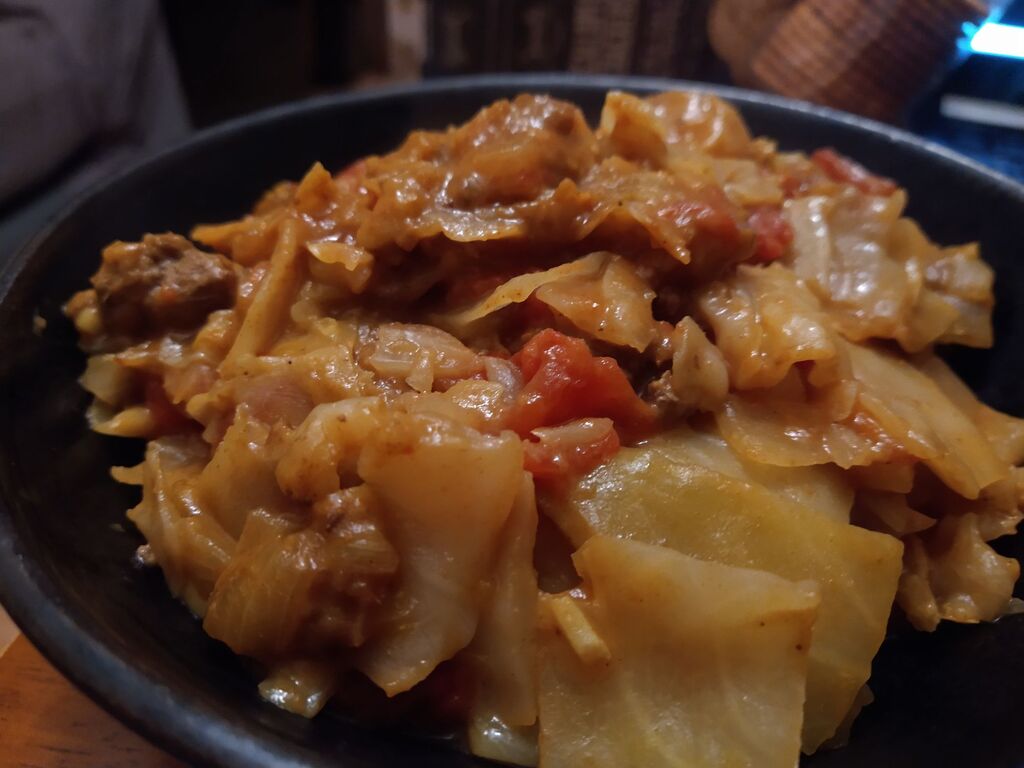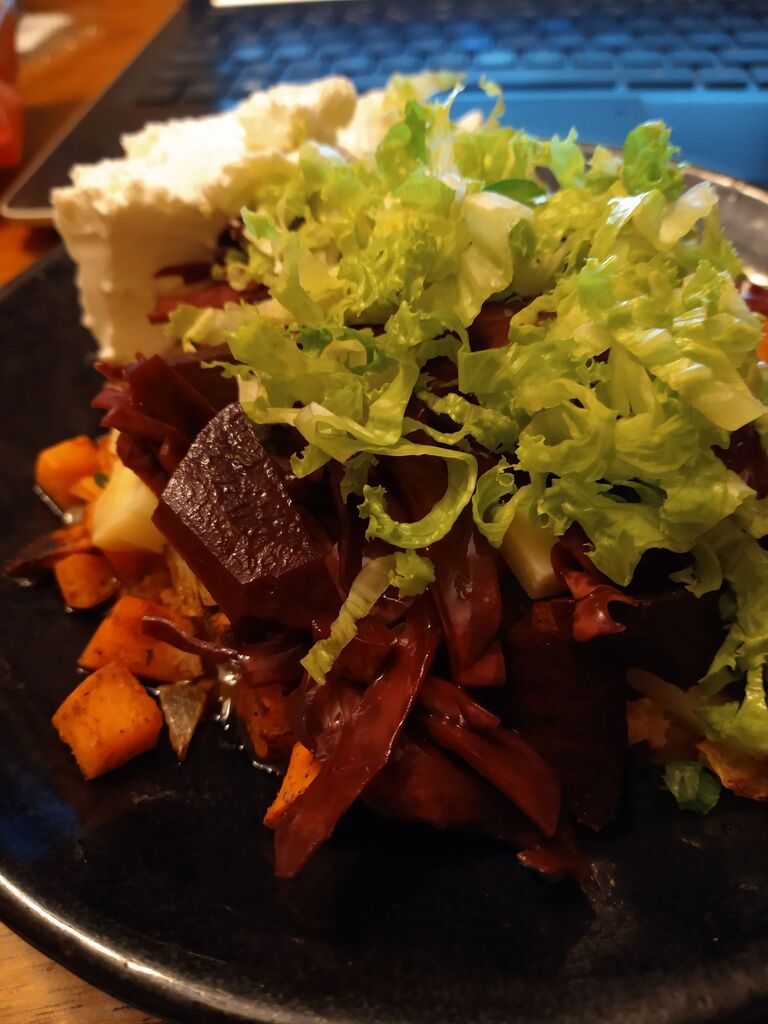
I’ve already written up this recipe a couple of times, but I wanted to update it. Here’s the post where I cite the original Roman recipes that inspired this meal.

Start with finely chopping up a few slices of purple onion and sauteing them in a little olive oil.

Let’s talk about ingredients
Kale – I like growing Red Russian Kale because it has a flatter leaf that is easier than most varieties to check for bugs as it is growing, but also a softer texture that cooks up nicely when harvested. This recipe will work with any variety of kale.
Wine – This should be a red wine, and I prefer a sweeter variety. Honestly, I love the kosher Manischewitz concord grape or blackberry flavors both for drinking and cooking with. But I also keep a bottle in my refrigerator of boiled down and concentrated red wine from any time I have a leftover partial bottle, and that would also work well here. Whatever you’ve got.
Fish sauce – I am pretty sure the ancient Romans used at least two different kinds of fish sauce. There’s the garum, which is very light colored and quite polite. That’s the table fish sauce for adjusting flavor after cooking. And then there’s the liquamen, which is almost ubiquitous in these recipes and seems to function for adding salt. So I look for the funkiest and saltiest fish sauces available. I’ve had good luck with the Squid Brand and Red Boat. Use the salty one with kale!
[if you want to avoid fish sauce, then you can switch to a powdered bouillon (maybe half a cube or less), soup base, or Maggi cube]

Okay, so your onions are getting caramelized around the edges and a little brown. Your patience will be rewarded. Now you can fill your pan with shredded kale (this is about 5 or 6 large leaves) and you can throw in other green herbs (parsley, cilantro, dandelion greens, scallion greens, dill, mint, random foraged edible things) if you want, but I usually just go with kale because if I’m growing it in my garden, then I already have too much of it to get through.
Cook the kale until it just brightens. If you want, you can add a teaspoon or two of water to help it move around, but it should be pretty dry right now. Because as soon as it’s a little cooked, v you’re going to add a teaspoon of fish sauce and a teaspoon of red wine and that with sizzle and steam everything up.
Mix everything together well and then tuck everything toward the middle of the pan with a little divot in the middle to make a nice nest.
Then crack an egg into the middle of the nest, grind some black pepper on top, and cover the pan and let the egg poach in that steam to cook.

I’m just a few minutes (it’s okay to peek) the egg will set. The yolk will turn from yellow to a pinkish color and the white might jiggle but it will all be white. If you want the white harder, you can go a little longer, but you risk your yolk solidifying and not being as runny. It’s your egg, so make it the way you like.

I like to eat this with a bagel and cream cheese. And with a spoon. Enjoy!





